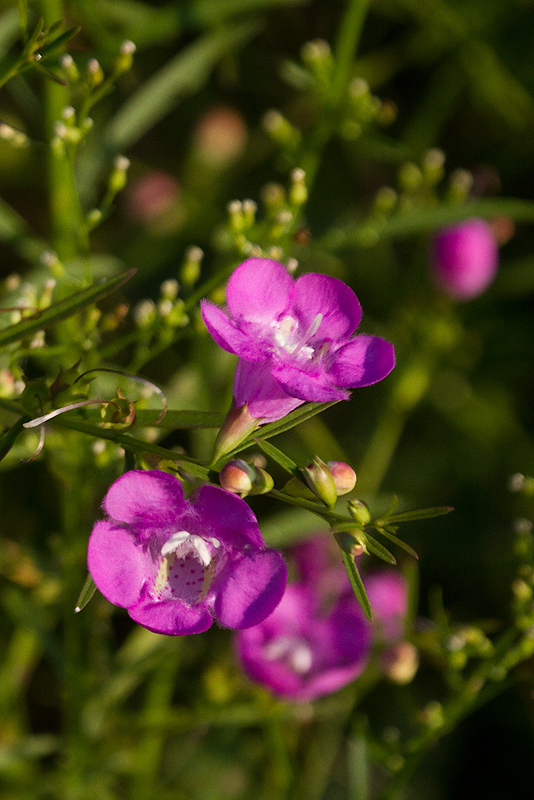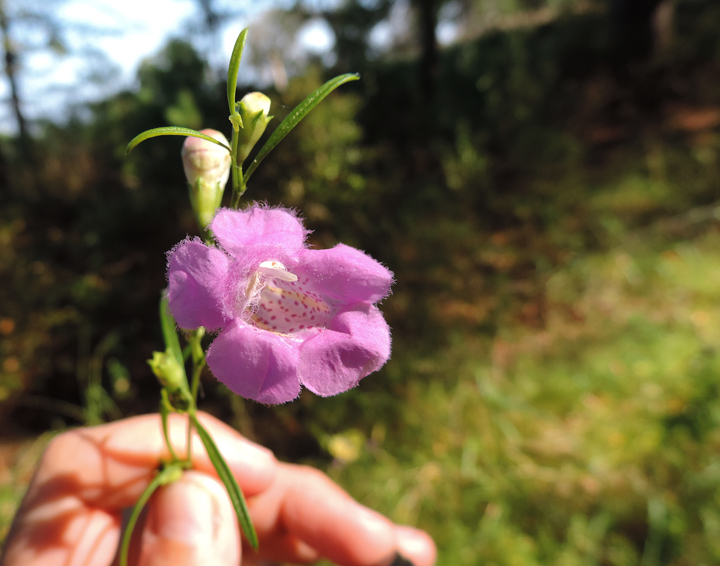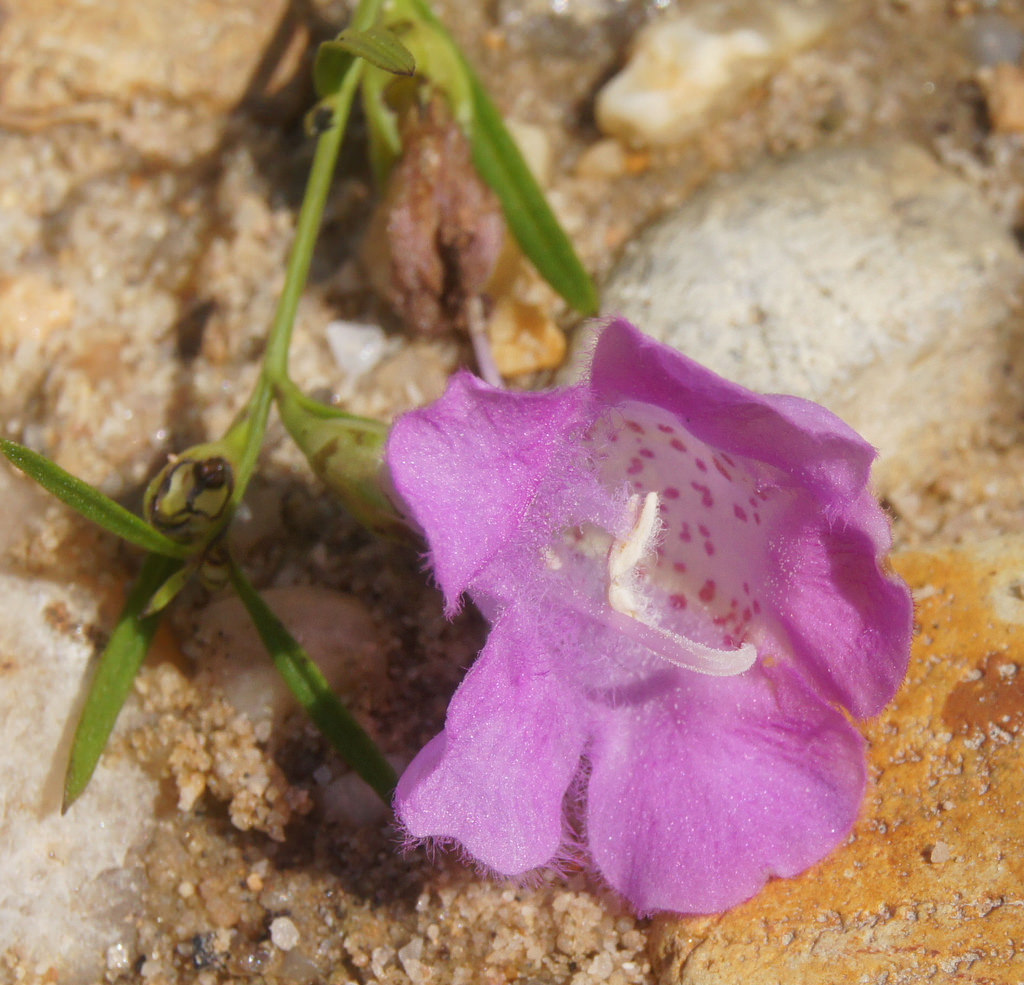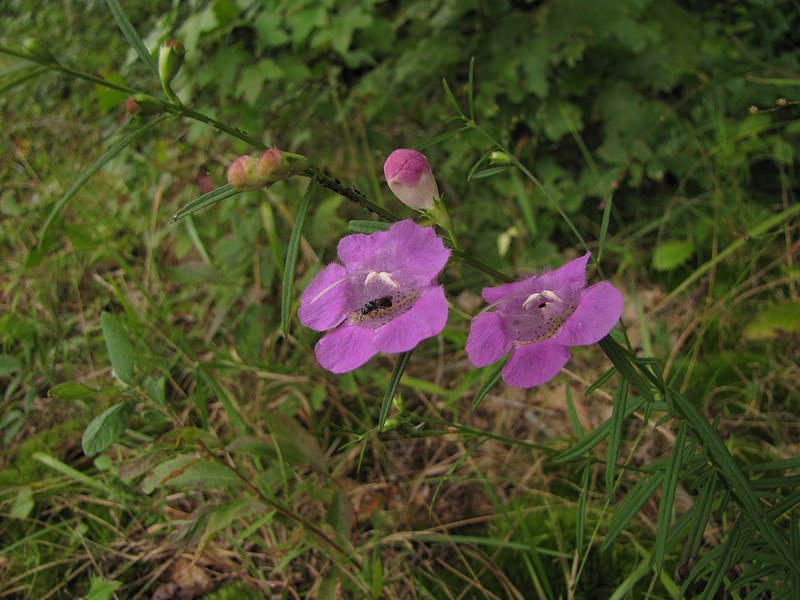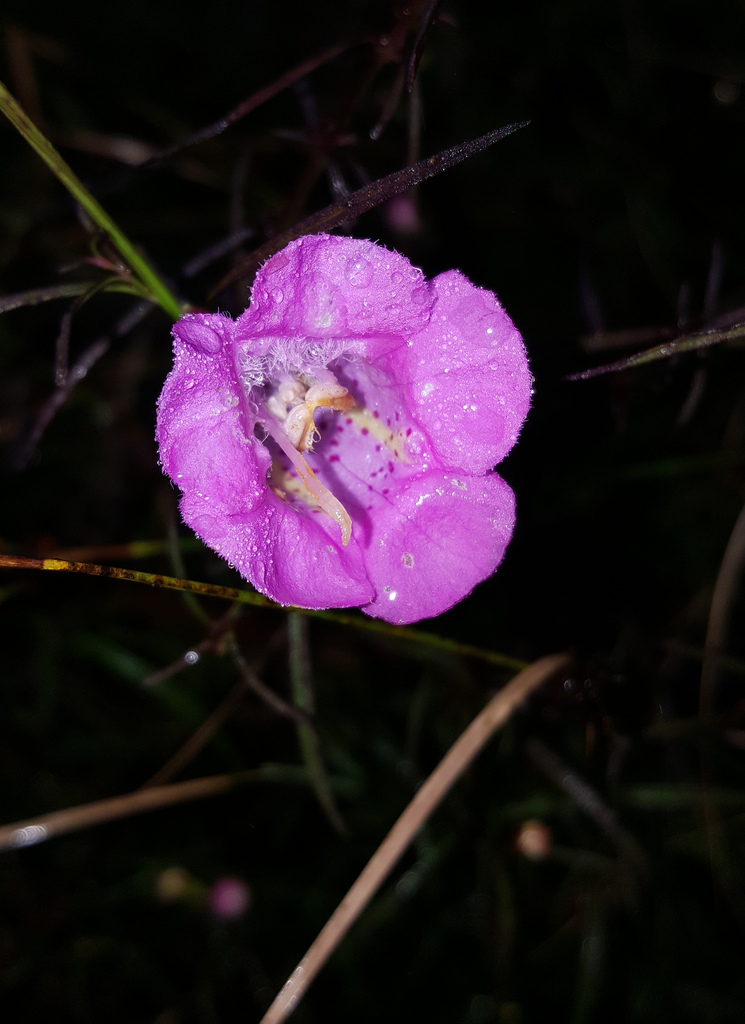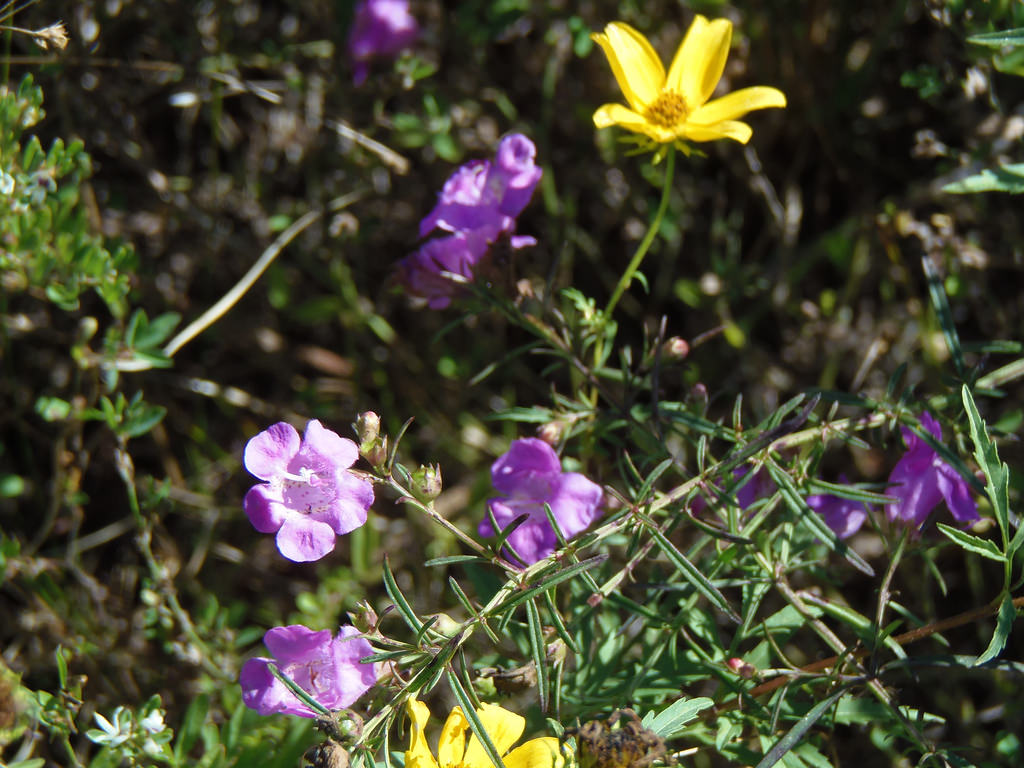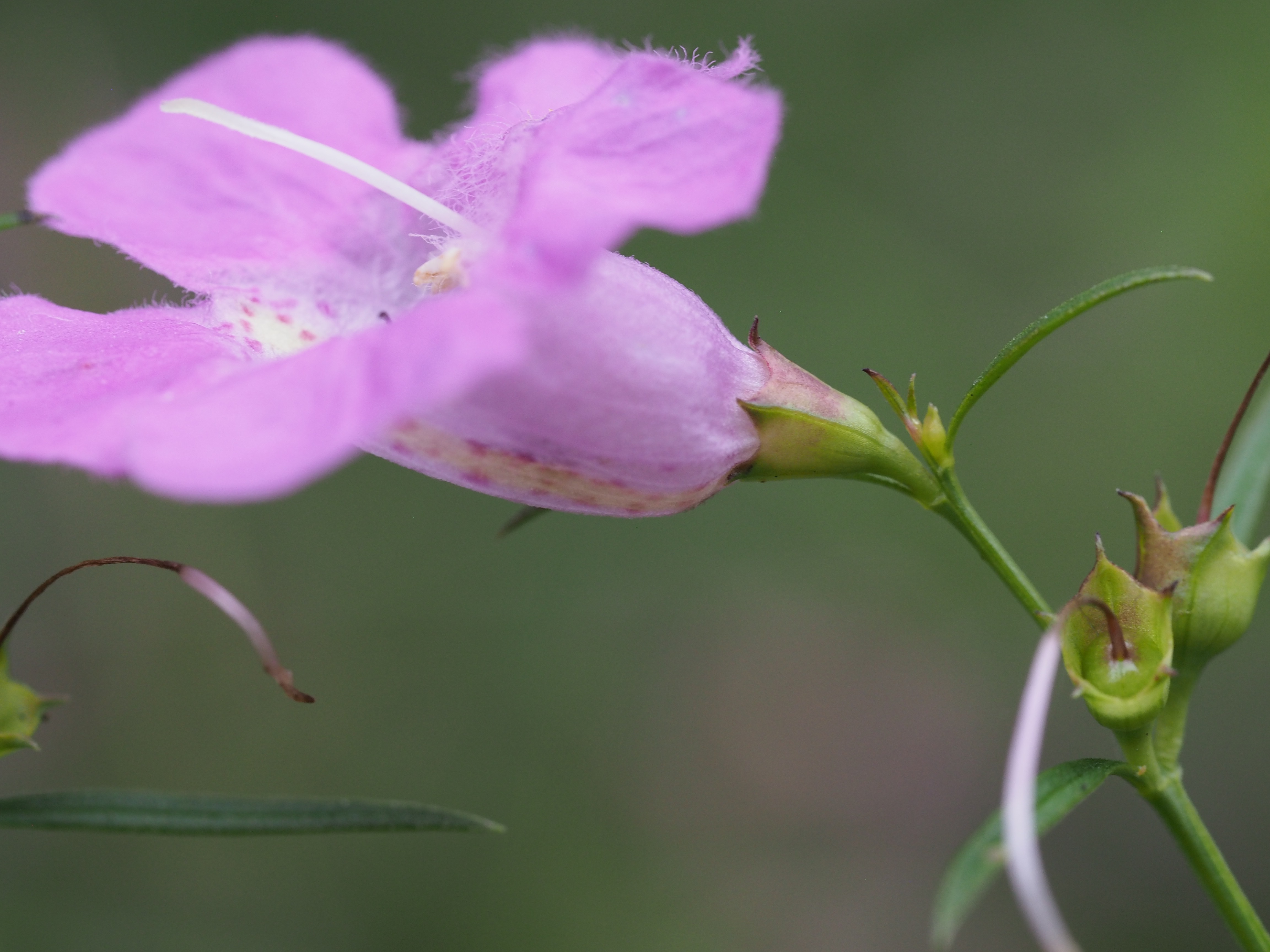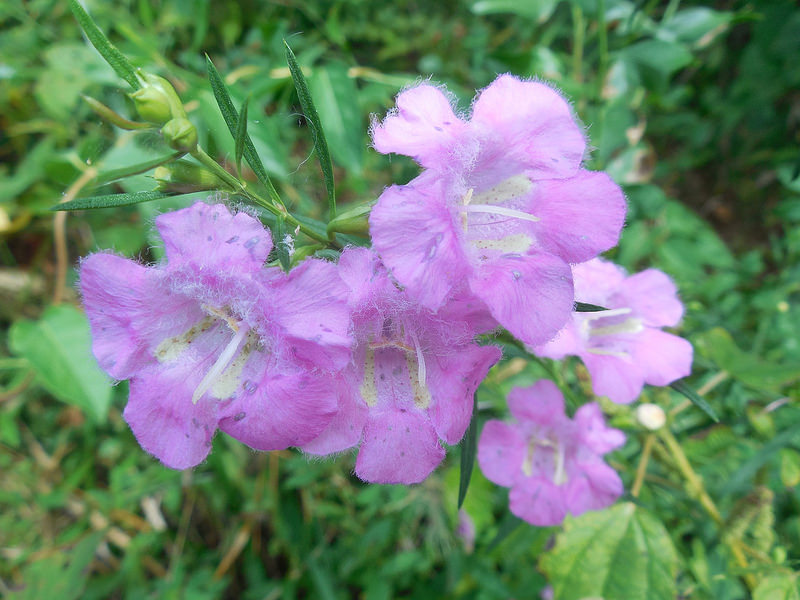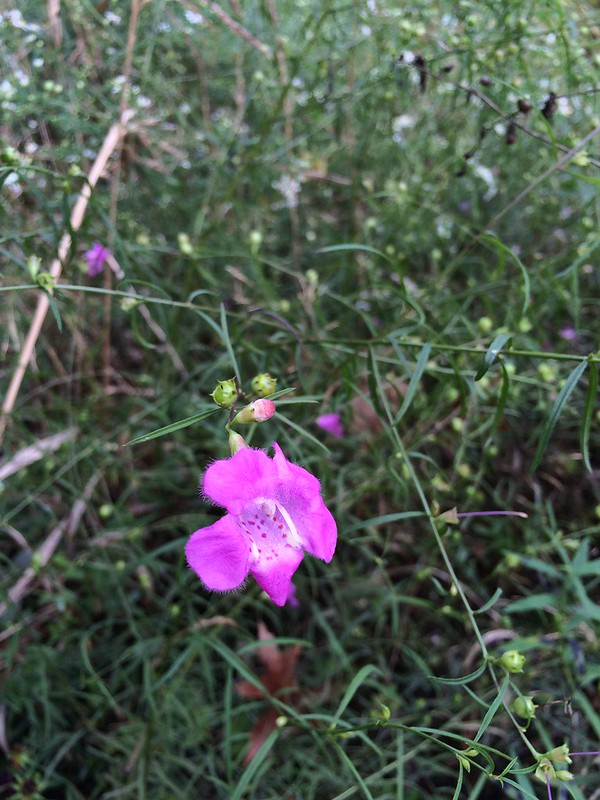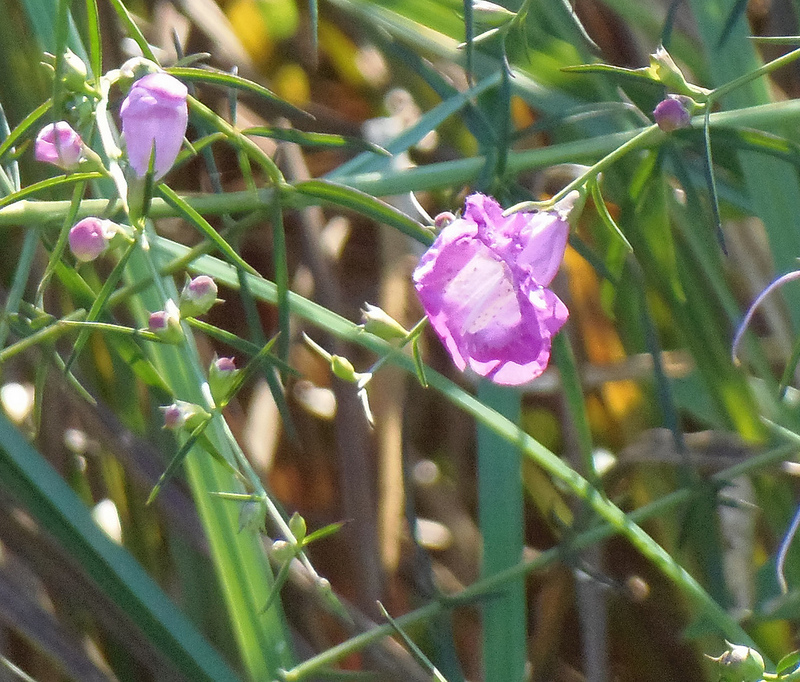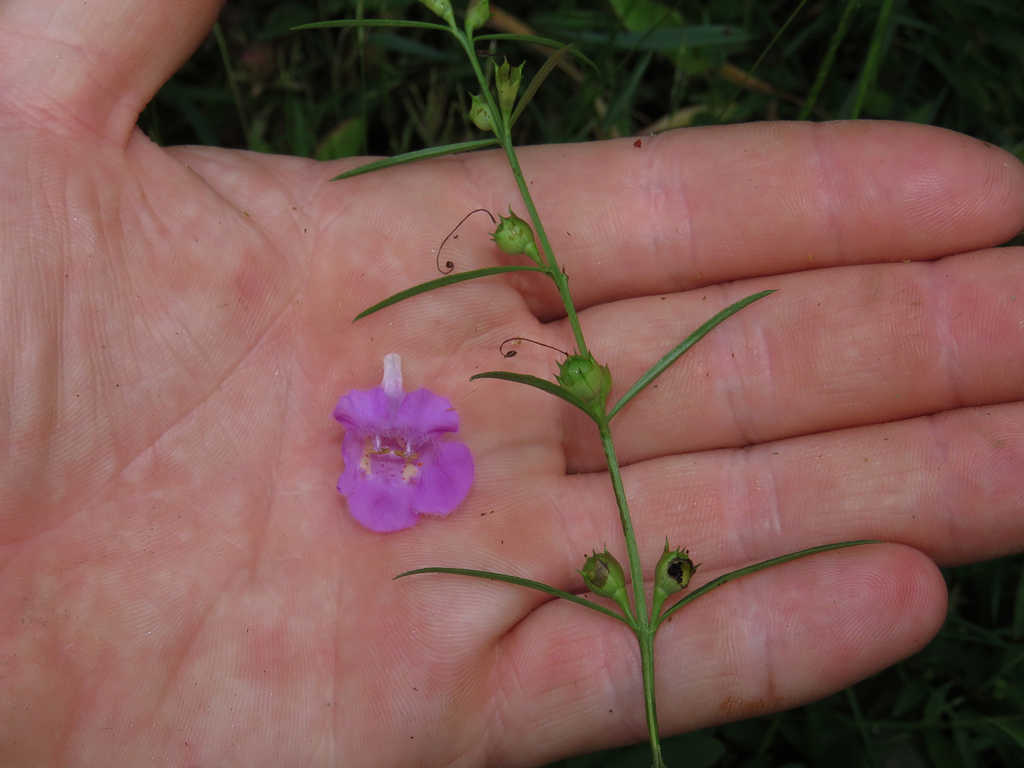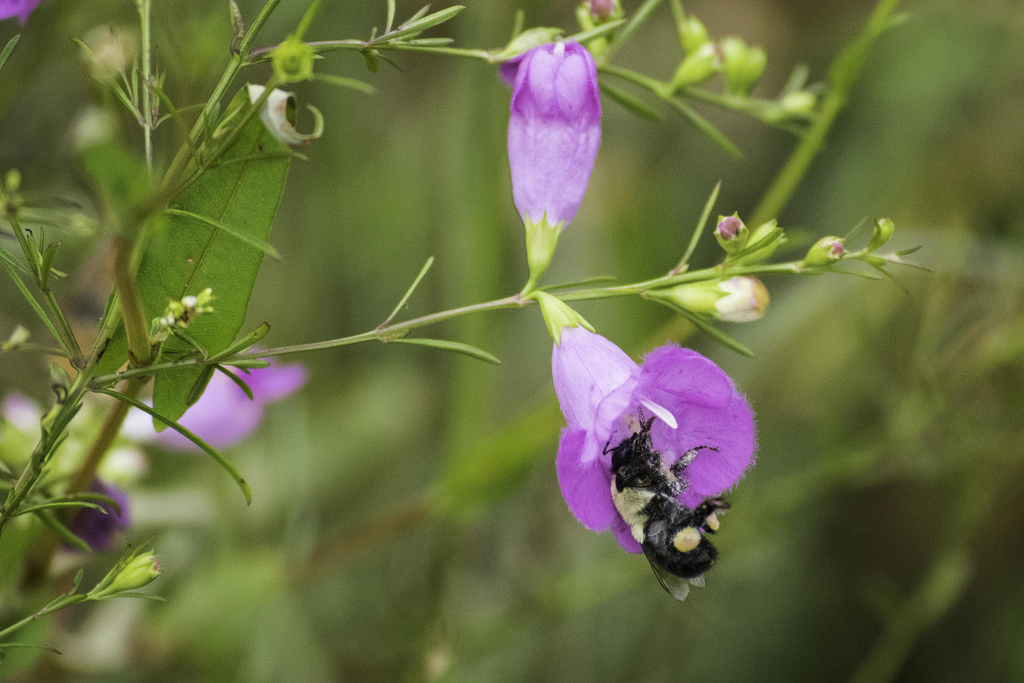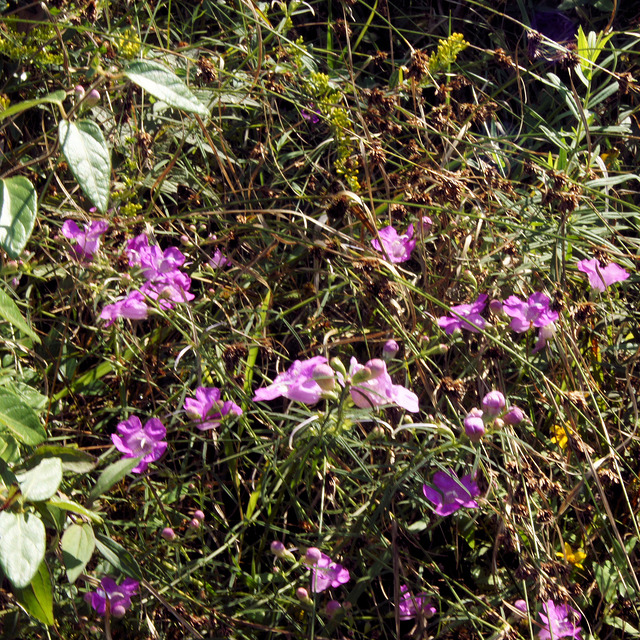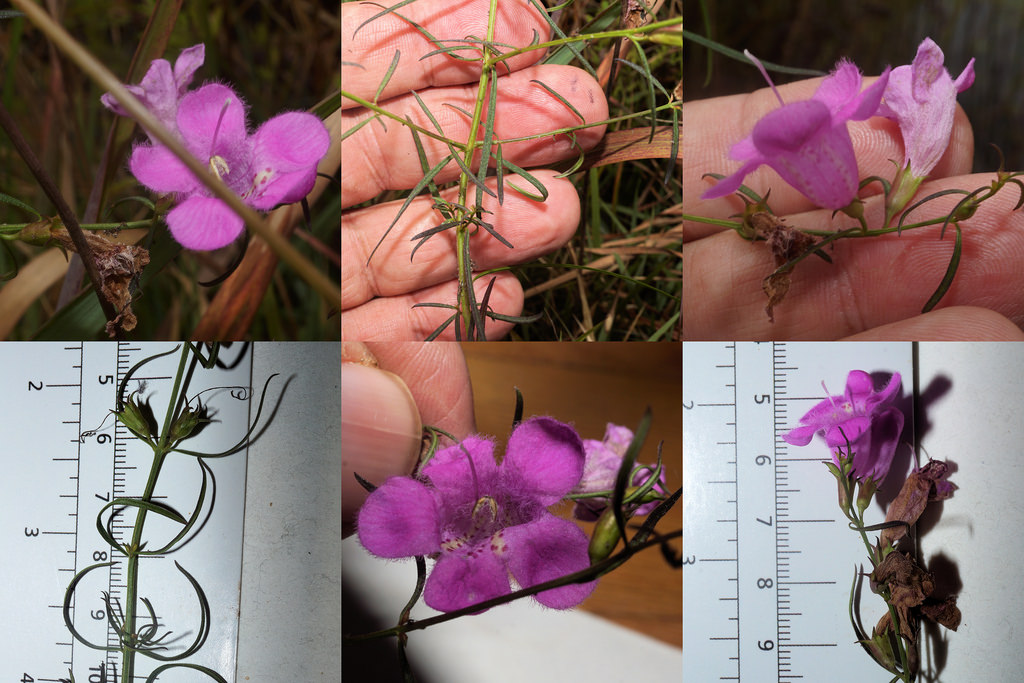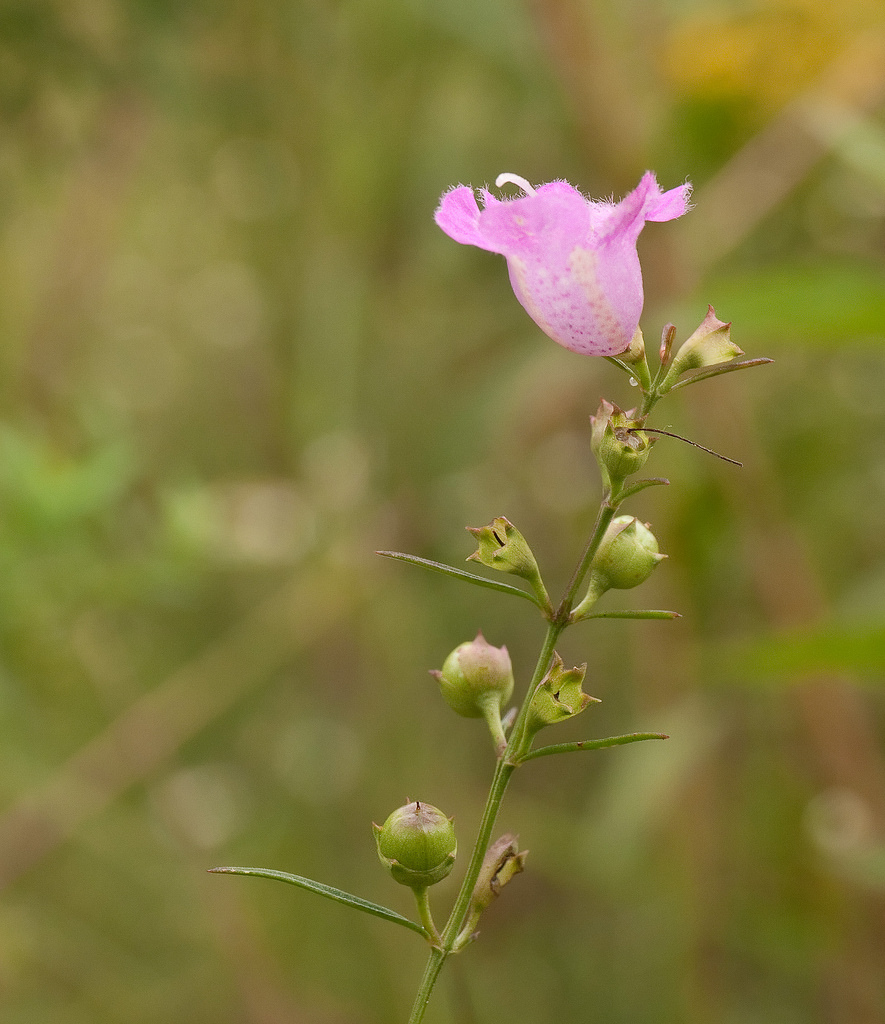Map Snapshot

















179 Records
Status
"Florida to eastern Texas, north to southern New England" (Reed, 1964).
Description
Note pointed sepals and hairy inside of flower.
Seasonality Snapshot
Source: Wikipedia
| Agalinis purpurea | |
|---|---|

| |
| Scientific classification | |
| Kingdom: | Plantae |
| Clade: | Tracheophytes |
| Clade: | Angiosperms |
| Clade: | Eudicots |
| Clade: | Asterids |
| Order: | Lamiales |
| Family: | Orobanchaceae |
| Genus: | Agalinis |
| Species: | A. purpurea
|
| Binomial name | |
| Agalinis purpurea | |
| Synonyms[2] | |
| |
Agalinis purpurea (known by common names including purple false foxglove and purple gerardia[3]) is an annual forb native to the eastern United States and Canada,[4] which produces purple flowers in late summer or early fall.
Description
[edit]Agalinis purpurea is 10 to 120 centimeters tall. The stem is slender, with spreading branches. It has simple opposite leaves, which are 10 to 40 millimeters long, and only 0.5 to 2 millimeters wide. The flowers are racemose on the branches. They are borne on 1 to 8 millimeter long pedicles. Each flower is bilaterally symmetrical, with five 20 to 38 millimeter long petals fused into a corolla tube, and four stamens. The fruit is a round 4 to 6 millimeter long dry capsule that splits open when ripe.[5][6]
Distribution and habitat
[edit]Agalinis purpurea is widely distributed in the eastern United States, although local distribution may be spotty. It has been recorded in Alabama, Arkansas, Connecticut, Washington, D.C., Delaware, Florida, Georgia, Iowa, Illinois, Indiana, Kansas, Kentucky, Louisiana, Massachusetts, Maryland, Michigan, Minnesota, Missouri, Mississippi, North Carolina, Nebraska, New Hampshire, New Jersey, New York, Ohio, Pennsylvania, Rhode Island, South Carolina, Tennessee, Texas, Virginia, Wisconsin, and West Virginia. It has also been recorded in the Canadian province of Ontario.[4] In Virginia, it grows in habitats such as marshes, swamps, interdune swales, and old fields.[7] The presence of this species is dependent on appropriate habitat, and it may be eliminated from an area by development, changes in land use, or competition with invasive species.
Ecology
[edit]Like other members of the genus Agalinis, this species is hemiparasitic on a variety of hosts, particularly graminoids.[8] Agalinis purpurea uses haustoria to connect its roots with those of its host plants, but it also has green tissues, and performs photosynthesis.[5]
Taxonomy
[edit]This species is a member of the genus Agalinis, which was formerly placed in the family Scrophulariaceae, but has more recently been placed in the family Orobanchaceae, in keeping with the findings of the Angiosperm Phylogeny Group.[9]
References
[edit]- ^ NatureServe (6 December 2024). "Agalinis purpurea | NatureServe Explorer". NatureServe Explorer. Arlington, Virginia. Retrieved 23 December 2024.
- ^ "Agalinis purpurea (L.) Pennell | Plants of the World Online | Kew Science". Plants of the World Online. Royal Botanic Gardens, Kew. Retrieved 23 December 2024.
- ^ Native Plant Database, evergreen.ca, archived from the original on 8 December 2015, retrieved 4 December 2015
- ^ a b "Plants Profile for Agalinis purpurea (purple false foxglove)". Retrieved January 28, 2014. USDA, NRCS. 2014. The PLANTS Database (http://plants.usda.gov)[permanent dead link]. National Plant Data Team, Greensboro, NC 27401-4901 USA.
- ^ a b "Agalinis purpurea (purple agalinis, purple false-foxglove): Go Botany". Retrieved January 28, 2014.
- ^ Britton, Nathaniel Lord & Brown, Addison (1913). An Illustrated Flora of the Northern United States, Canada and the British Possessions: From Newfoundland to the Parallel of the Southern Boundary of Virginia, and from the Atlantic Ocean Westward to the 102d Meridian, Volume 3., p. 210. Charles Scribner's Sons, New York.
- ^ "Digital Atlas of the Virginia Flora | Agalinis purpurea (L.) Pennell". Retrieved January 28, 2014. Virginia Botanical Associates. (2014). Digital Atlas of the Virginia Flora (http://www.vaplantatlas.org). c/o Virginia Botanical Associates, Blacksburg.
- ^ "Agalinis - Michigan Flora". Retrieved January 28, 2014. MICHIGAN FLORA ONLINE. A. A. Reznicek, E. G. Voss, & B. S. Walters. February 2011. University of Michigan.(http://michiganflora.net)
- ^ Angiosperm Phylogeny Group. 2003. An update of the Angiosperm Phylogeny Group classification for the orders and families of flowering plants: APG II. Botanical Journal of the Linnean Society 141:399-436., cited in Walter Fertig "Farewell to the Aceraceae: Changes in the Angiosperm Family Tree" (PDF). Archived from the original (PDF) on July 20, 2011. Retrieved February 8, 2014. The University of Montana Herbarium Newsletter. (Spring 2011). University of Montana, Missoula, MT. http://herbarium.dbs.umt.edu Archived 2014-03-06 at the Wayback Machine
External links
[edit] Media related to Agalinis purpurea at Wikimedia Commons
Media related to Agalinis purpurea at Wikimedia Commons
